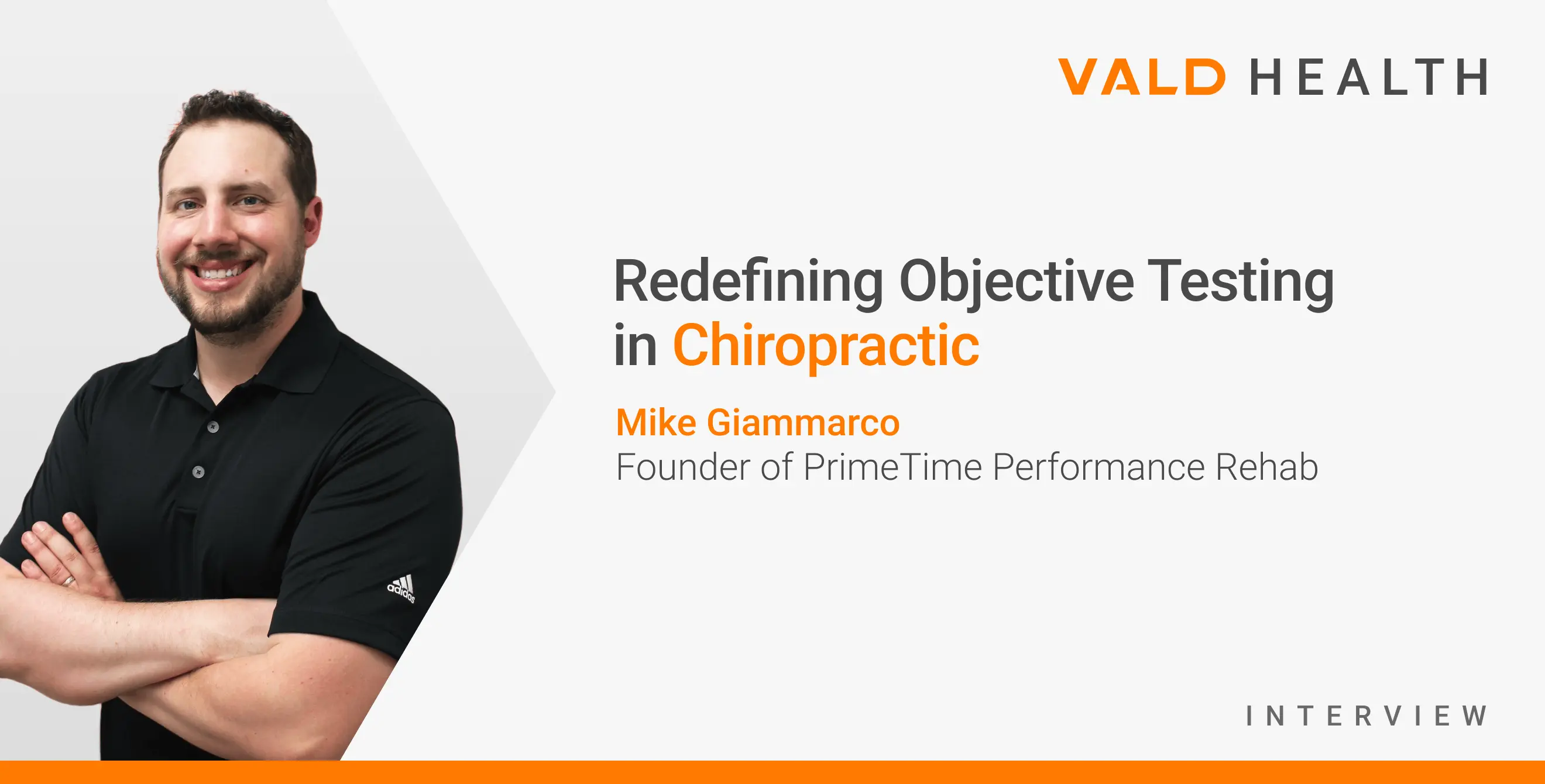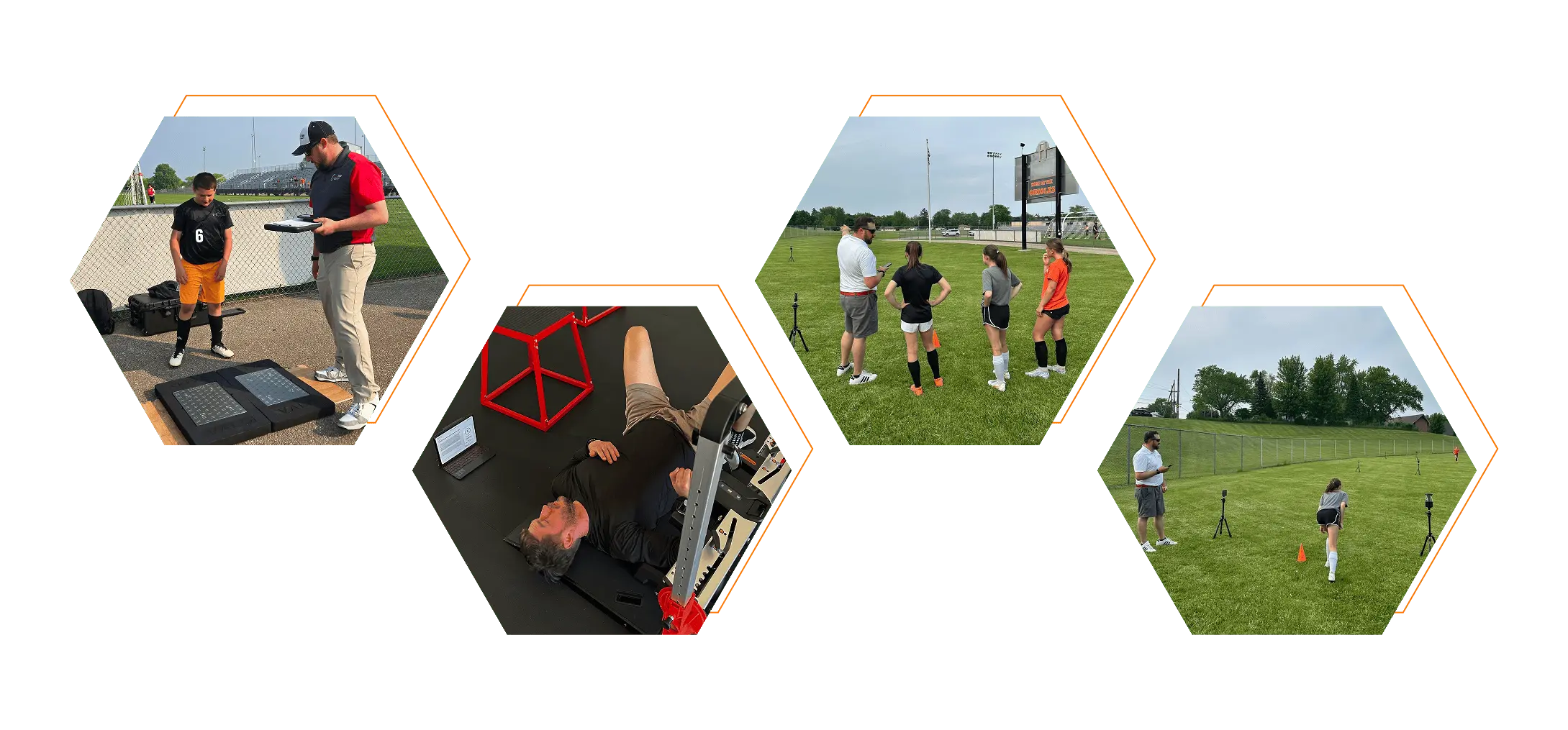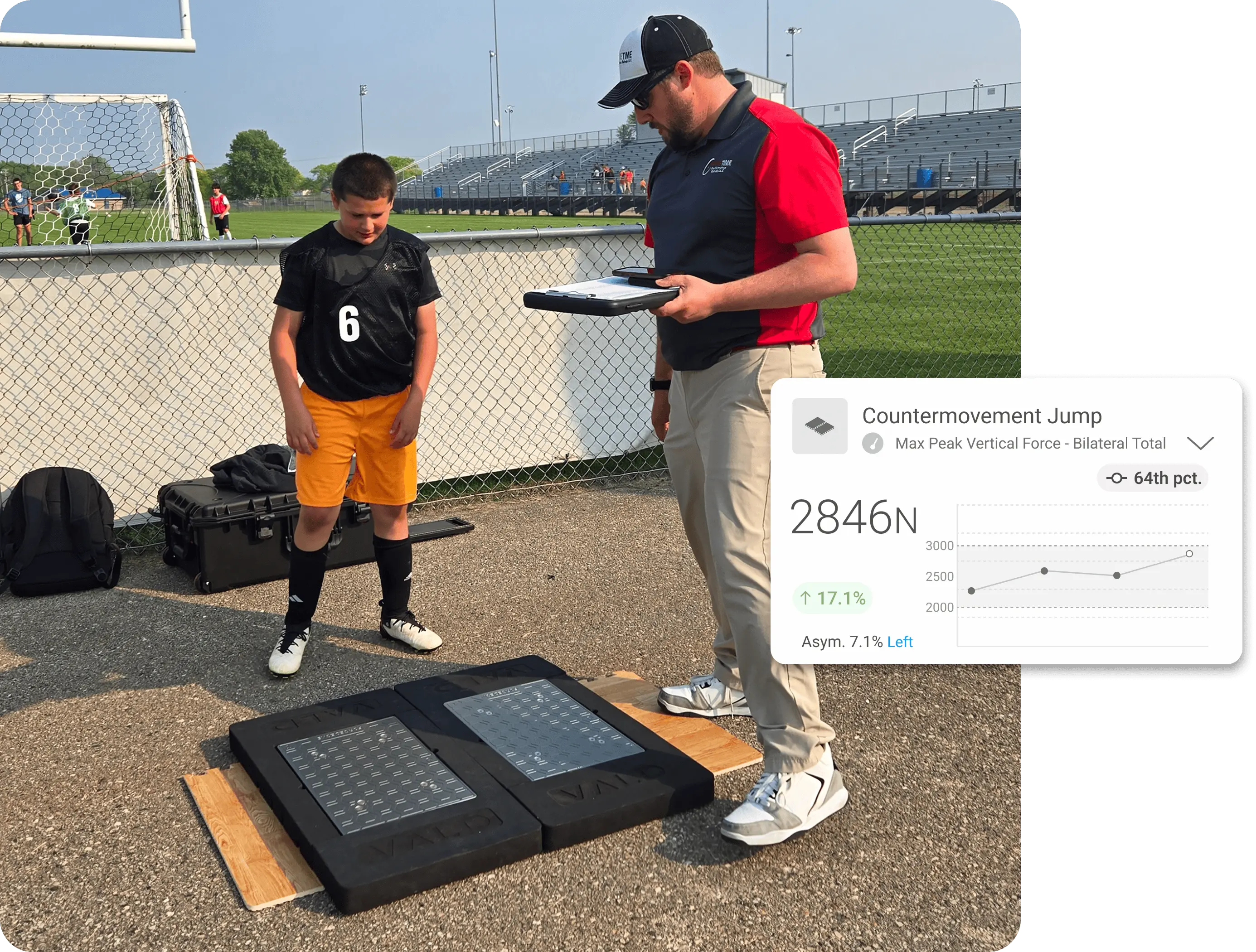Redefining Objective Testing in Chiropractic
Available in:
EN
Mike Giammarco, rehab chiropractor and strength coach, runs PrimeTime Performance Rehab in Hartford, Wisconsin. Since integrating DynaMo, SmartSpeed, ForceFrame and ForceDecks, Mike has found new momentum in his clinical outcomes.
In this Q&A, we explore how his approach has evolved, why objectivity matters and what the future could look like for the next generation of chiropractors.
What is your approach as a “rehab chiropractor,” and how does it differ from traditional chiropractic care?
The chiropractic profession has evolved significantly, with growing recognition that there’s no single “right” way to practice. This shift gives me the flexibility to approach care in a way that fits my style – something that builds beyond the traditional methods used 20 years ago.
With a background in strength and conditioning, I quickly recognized a disconnect between the needs of athletes and the conventional care they often receive: brief adjustments, a couple of banded exercises and a generic handout of stretches. While these approaches may offer short-term relief, they rarely provide long-lasting clinical success.

Mike applies technologies such as ForceDecks, ForceFrame and SmartSpeed across different clinical and performance settings.
Manual therapy – like adjustments and soft tissue work – is used when needed, but after the first few sessions, rehab typically shifts to look more like training than traditional chiropractic care. Tools such as ForceDecks, SmartSpeed, ForceFrame and DynaMo allow us to test, re-test and objectively guide the rehabilitation process, creating measurable and meaningful change.
From the moment patients enter the clinic, the environment signals a shift. There are no treatment tables in rows or posters of the spine. Instead, patients see a squat rack, weights and advanced testing equipment – all clear indicators that this is a space focused on performance, accountability and outcomes.
[At PrimeTime], patients see a squat rack, weights and advanced testing equipment – all clear indicators that this is a space focused on performance, accountability and outcomes.
Mike educating a patient on balance outcomes and measurement strategies.
This isn’t your typical clinic – and that’s by design. It’s built for people who want to move better, perform better and stay active long-term – whether you’re an athlete, weekend warrior or just ready to move past quick-fix care.
How did you practice before technology integration?
Before integrating objective technology, my practice was largely feel-based. People got better, but I didn’t always know why, and I found it hard to trust the consistency of “industry-standard” manual muscle tests. Over time, my outcomes started to feel insufficient and inconsistent.
The turning point came when I began noticing a pattern: the same athletes were coming back with the same problems every few months. This was especially common in runners, CrossFit athletes and golfers – sports that involve repetitive movements and high impact loads. I found that I was just treating the symptoms, not solving their problems.
…the same athletes were coming back with the same problems…I was just treating the symptoms, not solving their problems.
I initially thought adding better range of motion (ROM) testing might help, but a friend in sports science gave me a line that stuck: “If you’re not measuring force, you’re missing most of the story.” Shortly after, I came across VALD and began using ForceDecks, ForceFrame and DynaMo to better assess performance and recovery metrics.
A patient completing a guided isometric shoulder external and internal rotation exercise program using ForceFrame’s Training Mode.
What has the return on investment been since implementing technology in your practice?
It’s been twofold – better outcomes and a more sustainable business model. Using ForceDecks and DynaMo has allowed me to move away from short, symptom-based visits and build longer-term care plans based on measurable progress. This model has increased patient retention, improved referrals and positioned my clinic as a unique setting focused on performance, not just pain relief. When patients see their own data, they understand the value of what we’re doing and stay more engaged.
This clarity also supports the value of our services: it’s no longer just about feeling better but rather about demonstrating measurable improvement – something that now helps me stand out in a crowded market.
…it’s no longer just about feeling better but rather about demonstrating measurable improvement – something that now helps me stand out in a crowded market.
A lot of providers offer similar services, but not many can show objective data to guide care. That sets me apart and helps justify higher rates and more structured treatment plans. The tools will always have an eye-catching factor, but their real value lies in driving better outcomes and building a more sustainable business.

What changed after you started testing objectively?
Everything changed. Once I started regularly tracking force and asymmetry data, my treatment plans got sharper. Instead of hoping symptom resolution aligns with clinical progress, I have concrete evidence to guide my decisions.
Instead of hoping symptom resolution aligns with clinical progress, I have concrete evidence to guide my decisions.
Previously, symptom relief was considered a clear “win” – often leading to discharge or a shift in the plan. Now, even when pain resolves early, the work isn’t over. I’m able to bring tools such as ForceDecks and DynaMo to on-site practices and training sessions to help identify the underlying contributors and guide ongoing plans, ensuring long-term improvement.

Mike performing injury screening and on-field assessments for a local soccer team.
This shift allowed me to move beyond the typical three-visit discharge model. Now, each plan is tailored to the patient and supported by objective data. It’s not about extending care unnecessarily – it’s about ensuring we address the limitations to each patient’s performance.
Technology also improves communication. Instead of asking patients to “trust the process,” I can show them exactly what’s happening and create even stronger plans of care.
What advice would you give other chiropractors considering technology?
Start by evaluating whether your current clinic setup is ready for this kind of transition. Chiropractic care takes many forms, and while technology can elevate most practices, some models may face a steeper learning curve. Adopting new tools isn’t just about plugging them in – it requires time, context and a shift in how you approach care.
Many clinicians aren’t trained in objective testing or force-based assessments, so expect a learning curve and some initial discomfort. To build confidence, tap into educational resources – including videos, webinars, guides and blogs – which can help practitioners get up to speed on best practices.

…technology will test [you and] that kind of feedback demands humility, but it’s also one of the fastest ways to grow and improve your practice.
Most importantly, be ready to be challenged. This kind of technology will test your assumptions. It will clearly and objectively show whether your treatments and exercises are delivering the results you expect. That kind of feedback demands humility, but it’s also one of the fastest ways to grow and improve your practice.
What makes a chiropractor a good fit for using this kind of technology?
You don’t need to be a data scientist – but it helps if you’ve spent time coaching or training. That background makes it easier to connect the dots between force data, movement quality and injury patterns. Beyond experience, there are a few key traits that are especially helpful when integrating objective assessment:
- Willingness to learn: The value of tools such as ForceDecks and DynaMo comes from how you use the data, not just that you collect it.
- Trust in the data: You have to be okay with what the numbers show, even when they challenge what you think.
This kind of care takes time and humility, but it gives your patients a better outcome and gives you a clearer, more confident way to deliver high-quality outcomes.
If you are a clinician wanting to bring more objectivity into your practice, we can help. Reach out to learn how DynaMo, SmartSpeed, ForceFrame and ForceDecks can support your clinical goals and improve long-term outcomes for your patients.
